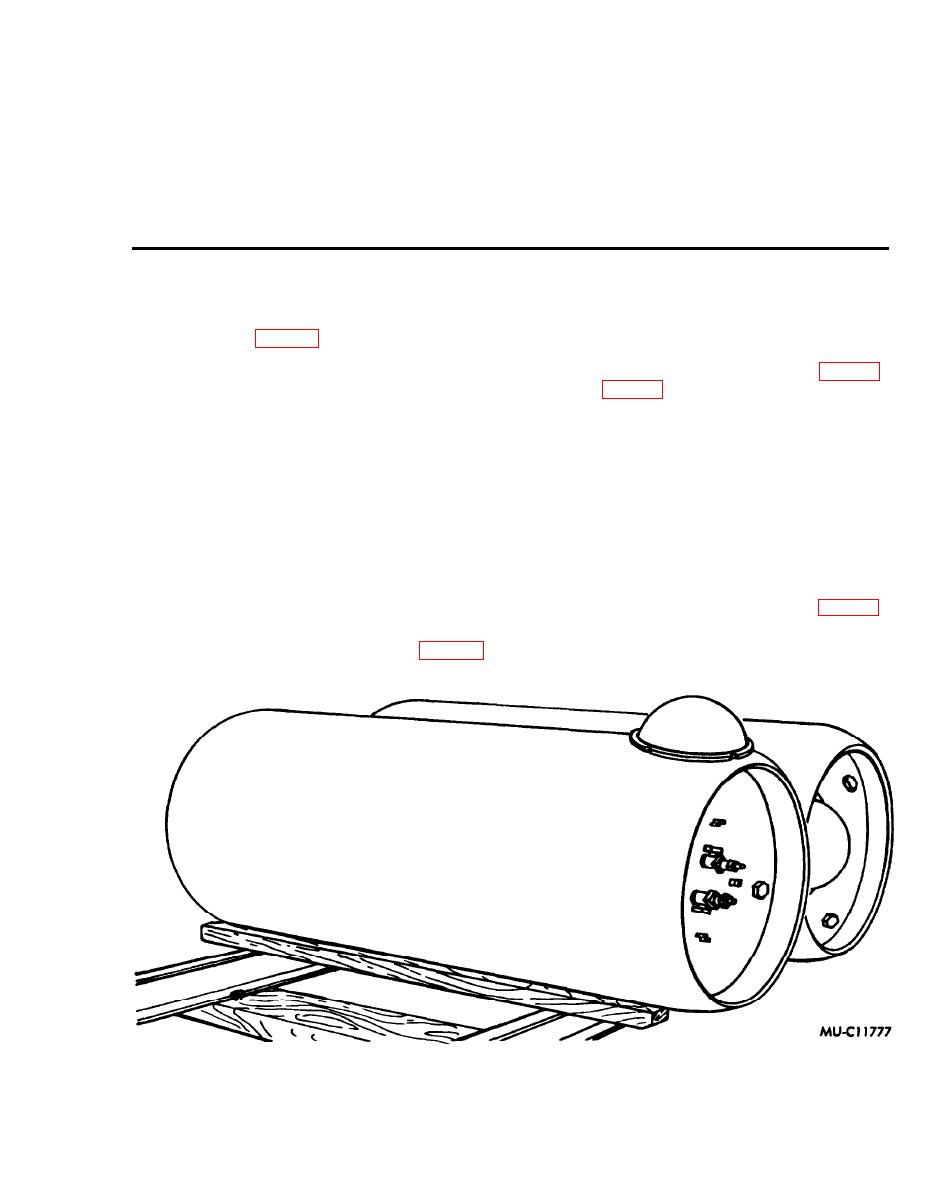 |
|||
|
|
|||
|
Page Title:
SECTION 3 CONTAINMENT PROCEDURES FOR CHEMICAL CONTAINERS |
|
||
| ||||||||||
|
|
 TM 9-1300-275/3
SECTION 3
CONTAINMENT PROCEDURES FOR CHEMICAL CONTAINERS
are built into all l-ton containers. -Tube function
3-1 THE 1-TON CONTAINER.
is to permit venting from one valve while trans-
3-1.1 Identification.
ferring an agent through the other.
This container (fig. 3-1), identified by its size
3-1.4.2 Valves. These containers are equipped
and recessed ends, is made in two types: A and
with two general types of valves: needle (fig. 3-3)
D which look alike. Type A can be identified by
and angle (fig. 3-4). The needle valve has a -
the serial number and date stamped on its front
inch diameter for type A containers and a l-inch
rim; Type D, by a circular, soldered nameplate on
diameter for type D. The angle valve is of l-inch
its rear head. Type A containers are used only for
diameter only because it cannot be used on type
agents that are gaseous. Type D is used for all
A containers.
agents.
a. The needle valve is used with CC, CK, and
3-1.2 Dimensions and Weights.
CL since these agents are gaseous at atmospheric
These containers have a weight (empty) of 1,600
pressures and tend to build up high pressure.
pounds; a working capacity of 170 gallons; a
b. The angle valve is used with mustard and
length of 81 inches; and a diameter of 30
nerve agents because they require a valve that
inches.
permits less restricted flow of the agent.
3-1.3 Hazards.
3-1.4.3 Plugs. Each l-ten container has six
Agent leaks from valves, plugs, or seams.
plugs, three evenly spaced in each head (fig. 3-5).
To prevent an explosion from excessive pressure,
3-1.4 Principles of Operation.
fusible plugs with lead-alloy cores are used when
3-1.4.1 Eduction Tubes. These tubes (fig. 3-2)
Figure 3-1. 1-Ton Container.
19
|
|
Privacy Statement - Press Release - Copyright Information. - Contact Us |